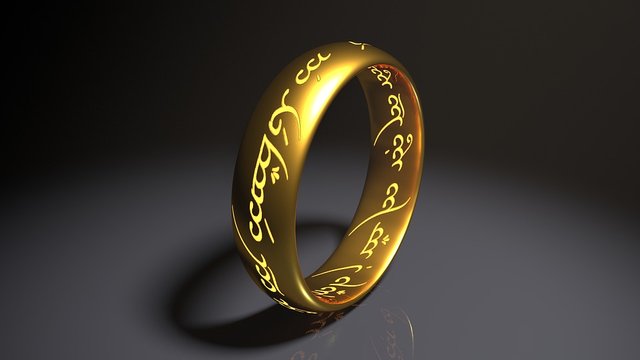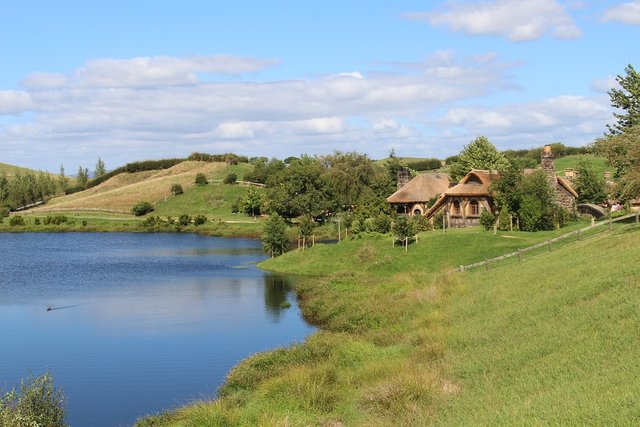J.R.R. Tolkien's Middle Earth Could Have Been Inspired From The Real World
As I wrote in a separate article on The Dockyards in November, 2016, the mythical universe created by English author J.R.R. Tolkien for his high-fantasy novels 'The Hobbit' (1937) and 'The Lord of the Rings' trilogy (1954-1955) might have actually been inspired from the real world.
More precisely, a superimposed map of the Middle Earth and of Europe made by Professor Peter Bird at the University of California in Los Angeles may shed some light on the actual geographic origins of Tolkien's topographic legendarium. The term 'legendarium' was coined by the author himself during the early 1950s with respect to the entirety of myths and legends which will eventually comprise most of his writings.

John Ronald Reuel Tolkien was Professor of Anglo-Saxon at St John's College, Oxford, from 1925 to 1945, and then Professor of English Language and Literature at the University of Oxford from 1945 to 1959. Given his academic background, it is quite clear to discern that he was considerably influenced by Anglo-Saxon history and mythology in the process of writing what would subsequently become some of the most critically acclaimed novels of all time.
In addition to extensive knowledge on Anglo-Saxon culture, Tolkien disposed of noteworthy documentation on other mythologies of the world, including most notably those of the Norsemen, the Finns, or the Slavs. These particular cultures (but not only) served as starting points for the embellishment of a unique extraordinary parallel universe which has been mesmerizing millions of readers since the publications of 'The Hobbit' and the three volumes of 'The Lord of the Rings' saga.
Furthermore, according to Tolkien himself, the setting of 'The Hobbit' and 'The Lord of the Rings' trilogy revolves around a fictional prehistoric state of our world (called 'Arda' in his writings) where different, rather peculiar, races of creatures dwelled (specifically Orcs, Elves, and Dwarves) roughly 6,000 years ago. So it is that the early world of Arda encompassed the continents of the Middle-earth, the Dark Lands, Aman (or the Undying Lands), as well as the isle of Númenor and several other realms left unnamed by Tolkien.
The legendary events and battles forming the basis of the narrative of both 'The Hobbit' and of 'The Lord of the Rings' trilogy precede the so-called Fourth Age of the Middle Earth, the era which marked the rise of humans and, consequently, the downfall of the rest of the supernatural creatures inhabiting Arda.
Regarding the map created by Professor Peter Bird at UCLA, it is important to note and correlate several coordinates from the Middle Earth with their geographical relevance within contemporary Europe:
- The Ruins of Beleriand would nowadays correspond to southern England, much of Denmark, and southern Sweden
- The Shire was doubtlessly inspired from England, yet it is not represented on the map as such
- Eregion Hills would have once covered present day northern Poland
- Gondor corresponds to the south of the Italian Alps
- Rohan corresponds to southern modern day Germany, as well as regions of contemporary Switzerland and Austria
- Eriador could be situated in present day western France
- Sea of Rhûn represents the Black Sea
Additionally, both 'The Lord of the Rings' and 'The Hobbit' were each made in film trilogies which were directed by Peter Jackson and filmed integrally in New Zealand during the early 2000s and 2010s. Below is a photograph depicting 'Hobbiton' in New Zealand.

Both the novels authored by J.R.R. Tolkien and their cinematographic counterparts directed by Peter Jackson are among the best selling books respectively highest grossing film series of all time.
Documentation sources and external links:
- First image source: www.pixabay.com
- Second image source: www.pixabay.com
- Arda on www.wikipedia.org (in English)
- Rawlinson and Bosworth Professor of Anglo-Saxon on www.wikipedia.org
- Merton Professors on www.wikipedia.org
- Hobbiton Movie Set on www.wikipedia.org (in English)
- J.R.R. Tolkien on www.britannica.com
- Professor Peter Bird's personal page
- J.R.R. Tolkien's "Lord of the Rings": Real Places May Have Inspired Middle Earth on www.bigthink.com
Tolkien was amazing. He deffininately drew on Norse and Irish mythology . His use of Logan and rune writing are prevalent. I had never thought of his maps.
Great info.
Very good point indeed! However, Tolkien himself stated that he did not dispose of a tremendous sympathy towards Celtic mythology (to say the least). I found that quite paradoxical as there are many references I can see in his works concerning Gaelic culture and even some Celtic languages (most notably the correlations between Elvish and Welsh/Irish/Scottish Gaelic).
While Elvish was truly based on multiple languages, there's a clear Celtic influence I can see (at least, this I believe is obvious while we're speaking of the films directed by Peter Jackson). Here are his thoughts on Celtic mythology: http://en.wikipedia.org/wiki/J._R._R._Tolkien's_influences#Celtic_mythology
Hi @vikthor, I just stopped back to let you know your post was one of my favourite reads yesterday and I included it in my Steemit Ramble. You can read what I wrote about your post here.